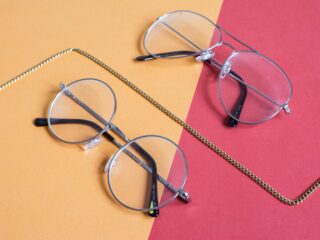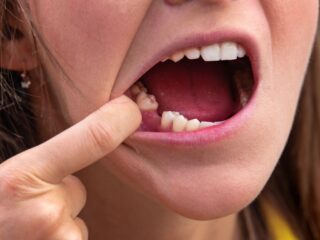Microneedling is a popular cosmetic procedure used to treat skin problems such as wrinkles, scarring, and pigmentation. This procedure involves using a device that has multiple tiny needles, which penetrate the skin’s surface and create micro injuries. This triggers the skin’s natural healing process, which can help to improve the skin’s texture and tone.
In this article, we will discuss what you need to know about microneedling treatments and any special considerations to be aware of:
How often to do microneedling
Microneedling is a cosmetic procedure that involves puncturing the skin with tiny needles. It is considered to be an effective anti-aging treatment and non-invasive option for wrinkles and acne scarring. This can also help to improve areas of the skin which have become dull or uneven, or to prevent further signs of sun damage or age spots.
During a microneedling session, a trained specialist uses a handheld tool with fine needles in order to create microscopic needle punctures in the treatment area. This prompts the body’s own healing mechanisms to be activated, stimulating cell renewal and collagen production. The new collagen produced helps improve skin tone and elasticity, reducing wrinkles and scars over time resulting in more youthful looking skin.
In order to ensure that you get the maximum benefits from microneedling treatments, it is important for you to be aware of certain considerations prior to receiving any treatment sessions –
- The major factor that should always be taken into account before any procedure is your overall health; medical history should always be discussed beforehand as microneedling may not be suitable for everyone particularly those with compromised immune systems.
- It’s also important that you discuss any allergies or other medical conditions with your doctor beforehand as some people are sensitive or allergic to numbing creams or other ingredients used in some products that may form part of your treatment.
- It’s best to perform extra research on microneedling techniques performed at your specific facility and find out their protocols on safety, hygiene, tools sterilisation etc., prior to receiving any treatments.
Benefits
Microneedling treatments can provide a variety of benefits for many different types of skin issues. It is a minimally invasive procedure that requires no downtime, so it can be performed on an outpatient basis. The primary benefit of microneedling is that it stimulates the production of collagen and elastin in the areas being treated. Increased collagen and elastin production helps to reduce any wrinkles or fine lines on the skin, improve the texture, as well as improve blood circulation, which creates a healthier and smoother complexion.
Microneedling treatments are also capable of addressing more severe skin issues such as acne scars and stretch marks. Because the needles penetrate deep beneath the surface of the skin they are able to directly target and stimulate underlying structures beneath affected areas, therefore improving overall tone and texture over time with repeated treatments. It may even be effective in treating sun damage or hyperpigmentation by helping to fade dark spots and discoloration on an individual’s face or body.
Finally, microneedling doesn’t just target specific skin conditions – it also naturally boosts skin health due to an increase in blood circulation brought about by micro-injuries to capillaries near the surface layer – resulting in brighter, smoother looking skin with enhanced elasticity after just one treatment.
Preparing for Treatment
Before embarking on any microneedling treatments, it’s important to do some research and understand the potential risks, benefits, and safety considerations associated with the procedure. To ensure that you make a well-informed decision and receive the best possible outcome from the treatments, it is essential to talk to an experienced practitioner and discuss the details of the procedure.
This article will outline some of the most important things to consider before getting microneedling treatments:
Find a qualified practitioner
Prior to getting any microneedling treatments, it is important to find a qualified practitioner. Make sure the practitioner is trained and qualified to perform this type of skin treatment, as there may be health risks associated with performing microneedling if done incorrectly. Ask your prospective practitioner about their experience with administering these treatments and ensure they are comfortable and able to address your questions and concerns before proceeding.
Be sure to check their credentials and make sure they have a clear understanding of your expectations prior to making an appointment. Additionally, inquire about the type of equipment they use for performing the procedure; only certified personnel should be using sterile, safe needles inside a sanitised procedure room.
Finally, discuss potential side effects and potential allergic reactions that could occur during or after the procedure with your practitioner:
- What are the potential side effects?
- Are there any potential allergic reactions?
Discuss your medical history
Before getting microneedling treatments, it is important to discuss your medical history with your doctor or dermatologist. Certain conditions or treatments can increase the risk of experiencing adverse side effects. It is also critical to inform your provider of any medications you are taking and any allergies you may have as microneedling treatments involve pricking the skin with numerous needles.
Your medical history may include conditions such as pregnancy, diabetes, cosmetic surgery, vitiligo and herpes simplex virus. It is also good practice to mention any topical products you have recently used or any topical medications you have applied prior to treatment. Your physician should also be aware whether you tan more frequently than normal or if your skin tends to be sensitive to sun exposure.
Letting your provider know about any recent surgeries, changes in diet and lifestyle habits, as well as current general health state will ensure that he/she can better assess and prepare for a safe treatment process. It’s best to provide an extensive medical history during consultations so that the skin expert can decide how best to apply the procedure in order to safely achieve desired results.
Avoid certain medications
Prior to receiving microneedling treatments, it is important to avoid certain medications that may cause adverse reactions when combined with the procedure. Antihistamines, including anti-allergy drugs, can increase the risk of bruising and skin irritation. Additionally, blood thinning medications such as nonsteroidal anti-inflammatory drugs (NSAIDs), aspirin, heparin and warfarin should not be taken two to three days before a microneedling session.
Prescription medications that may interfere with the procedure include corticosteroids which are often taken for hay fever or psoriasis. Steroid injections should also be avoided prior to treatment. For those taking oral supplements such as Vitamin A derivatives (for skin acne damage) or other retinoids such as Accutane (isotretinoin), discontinuation of use at least four to six weeks ahead of time is recommended. Please consult your physician if you have questions about any medications you are taking and their potential interaction with the treatment.
During Treatment
Before undergoing a microneedling treatment, there are several things that should be considered and discussed with your doctor. Microneedling treatments are an invasive procedure, so they need to be done with great care. Here we will discuss the important considerations to keep in mind during microneedling treatments:
- Skin type
- Medical history
- Medications
- Allergies
- Any existing skin conditions
- Expected results
- Risks and potential side effects
Expectations
Before you come in for treatment, it is important that you be aware of some considerations that can help ensure a successful and safe experience. Microneedling treatments take a few hours to complete, with most people completing their treatments within one to two hours. During the procedure, numbing cream is applied to the skin to reduce discomfort during the treatment. It is also useful to discuss any medications or supplements you take with your practitioner before getting started.
It is important that you communicate your expectations for results and make sure these align with what can realistically be achieved in one session. For many conditions, several microneedling sessions are needed for optimal results. Additionally, different types of microneedling offer varying levels of depth and intensity – making sure that your needs are met using an appropriate technique is key! Finally, it’s important to let your practitioner know of any particular concerns or areas that need special attention prior to starting the procedure.
Pain management
The most common method of pain relief associated with microneedling treatments is to use local anaesthesia or a numbing cream before and during the procedure. Speak to your provider about which type of numbing cream would work best for you and how it should be applied. Additionally, discuss any potential side-effects the numbing cream could have for you, such as skin irritation, infection, and swelling.
Your provider might also recommend over-the-counter pain relief medications or antibiotics during treatment or afterward to reduce inflammation and pain. As with any medication, check with your healthcare team before taking any prescribed or over-the-counter medication during microneedling treatments.
Aftercare
It is important to take proper care after getting a microneedling treatment to ensure optimal results. While the actual procedure only takes about 30 minutes, the recovery process can last up to several days after. To maximise your treatment and minimise potential side effects, follow the specific post-procedure care instructions provided by your healthcare provider. Generally, it will involve cleaning the treated area and applying a topical ointment or cream such as antibiotic ointment or petroleum jelly.
In addition, sun protection is essential after a microneedling treatment. Skin is especially susceptible to damage from UV rays during this recovery period since wounds (even micro-wounds) can impact the skin’s normal defences against sun exposure. It’s recommended to wear sunscreen regularly for several weeks after your treatment – even if you are indoors – and during any extended periods outside. Sunscreen should have an SPF of 30 or higher and be applied every two hours when out in direct sunlight for longer periods of time (especially on any exposed skin).
Post-treatment redness, swelling and bruising are normal side effects that should go away within 1–3 days after receiving a microneedling treatment. To prevent infection from setting in, it is also important to not pick at scabs that form in the treated areas as this could lead to scarring or other more serious wound/skin issues.
Risks and Complications
When it comes to microneedling treatments, it is important to be aware of the risks and complications that may arise. Although microneedling treatments are generally safe and can be very effective at improving the appearance of skin, there is a risk of infection and other side effects. It is important to be aware of the potential risks before getting a microneedling treatment.
Infection
When undergoing microneedling treatments, the risk of infection is always a concern. This is especially true if the needles used are not made with sterile medical grade stainless steel. Unsterilized needles can introduce germs and bacteria into the skin, leading to an infection. It’s also important to ensure that only creams and ointments with safe ingredients are used to treat any post-treatment redness or swelling in order to minimise risk of inflammation or infection.
To reduce the chance of an infection, patients should always ensure they are working with a qualified skincare professional who uses proper hygienic techniques. These experts will clean and disinfect instruments before use and will be able to provide pre- and post-treatment care recommendations for maintaining healthy skin long after the procedure is completed.
Scarring
Scarring is a potential risk with any microneedling procedure and should be taken into consideration prior to the procedure. During the healing process, there are many factors that can contribute to scarring, such as improper use of aftercare products or techniques, an overly aggressive treatment course (too many microneedling sessions in too short a period of time), poor technique by the provider, or individual response to certain products used during or after treatments.
To prevent adverse reactions and avoid scar formation, it is important to choose your provider carefully. Only work with trained and qualified professionals who understand the importance of safe practices at every step in getting microneedling treatments. It is also helpful for patients to closely follow post-treatment steps recommended by their provider:
- cleanse very gently;
- avoid picking or scrubbing roughly;
- don’t apply harsh astringents;
- stay out of direct sunlight;
- never squeeze pimples/acne lesions;
- apply moisturisers as needed but not too much;
- avoid wearing tight clothing over treated areas;
- allow treated areas ample downtime for healing; and
- discontinue treatments if any adverse reactions appear.
Taking all these precautions will help ensure that you get successful results from your microneedling treatments without risking permanent scarring.
Hyperpigmentation
One of the possible side effects of microneedling treatments is hyperpigmentation. This is when sections of the skin become darker than the surrounding tissue. The darker area can take on a variety of shades depending on skin type, including blue, red, tan, brown and even black.
Though it is not common, some individuals find that they have an almost immediate reaction to the treatment and develop hyperpigmentation directly following their session. In some cases, this may resolve itself within a few weeks or months as the body begins to heal itself naturally; however in other cases, it may continue for a longer period of time and require medical intervention.
If you are considering getting microneedling treatments for aesthetic reasons but want to lessen your chances at experiencing any sort of post-treatment hyperpigmentation it is best to:
- Educate yourself about this potential complication before undergoing the procedure.
- Speak with your provider about any underlying conditions that may put you at greater risk for reaction or skin discoloration following treatment.
Results
Microneedling treatments can provide amazing results to help improve the appearance of your skin. With these treatments, you are able to reduce the appearance of fine lines, wrinkles, acne scars, large pores and uneven skin tone. They can help improve the overall texture of your skin as well.
However, there are some special considerations you should be aware of before getting microneedling treatments. Let’s explore what these are:
Results timeline
One of the most important things to keep in mind before undergoing microneedling treatments is the results timeline. Although results may vary between individuals, the typical timeline for results is about two or three weeks after the procedure. Initially, skin may appear slightly red and feel warm following a session, but within 24-48 hours these effects should start to fade away.
During this two or three week period following treatment, patients will begin to notice an improvement in their skin as collagen production continues to increase and scar/wrinkle tissue begins to remodel. It’s important not to rush this process, as waiting a few weeks can allow you to make sure you’re getting the best possible results from your treatments. However, if you have any questions or concerns regarding your timeline, it’s best to consult with your doctor or practitioner.
It should be noted that both immediate and long-term results differ between individuals and depend on several factors such as age and type of skin damage being treated; younger patients with mild skin damage typically require fewer treatments than older individuals with more pronounced scarring/damage. Furthermore, for some patients multiple follow-up treatments may be necessary in order to reach desired outcomes – if this is the case for you then your doctor will discuss all available options at an appropriate time following initial treatment.
Maintenance
Regular maintenance of the skin is recommended after microneedling treatments. Your skin may be more sensitive than usual to the sun, so wearing sunscreen with a sun protection factor (SPF) of 30 or higher and covering up when outdoors for an extended period of time is advised. Additionally, you may use moisturising products post-treatment as long as they don’t have any harsh or irritating ingredients in them.
Additionally, it is important not to pick at any scabs that may form on your face after treatment as they will help heal the skin faster and keep inflammation at bay. Lastly, it is strongly recommended to avoid laser treatments and any other forms of treatment that involve heat during the post-treatment period as these can cause further inflammation and scarring.
When to expect results
When it comes to microneedling treatments, you should expect to wait a few weeks before seeing any results. It may take up to three weeks for the skin cells to completely repair and rebuild after the treatment. The new collagen can take several months to become mature, meaning that visible improvements can take at least a month before they are noticeable. Because of this, it is important to be patient when waiting for the results of your microneedling treatments.
It is also important to understand that individual skin types will affect how long it takes before any true improvement begins to be seen. Younger skin tends to respond better and quicker because cells divide quickly, while older skin takes more time because cell division slows with age.
Your skincare professional may recommend taking before and after photos in order to make sure you are receiving the best results from your treatments. They may also recommend that you keep track of proper skin care practices at home in order to help prolong the benefits of the treatment session.











